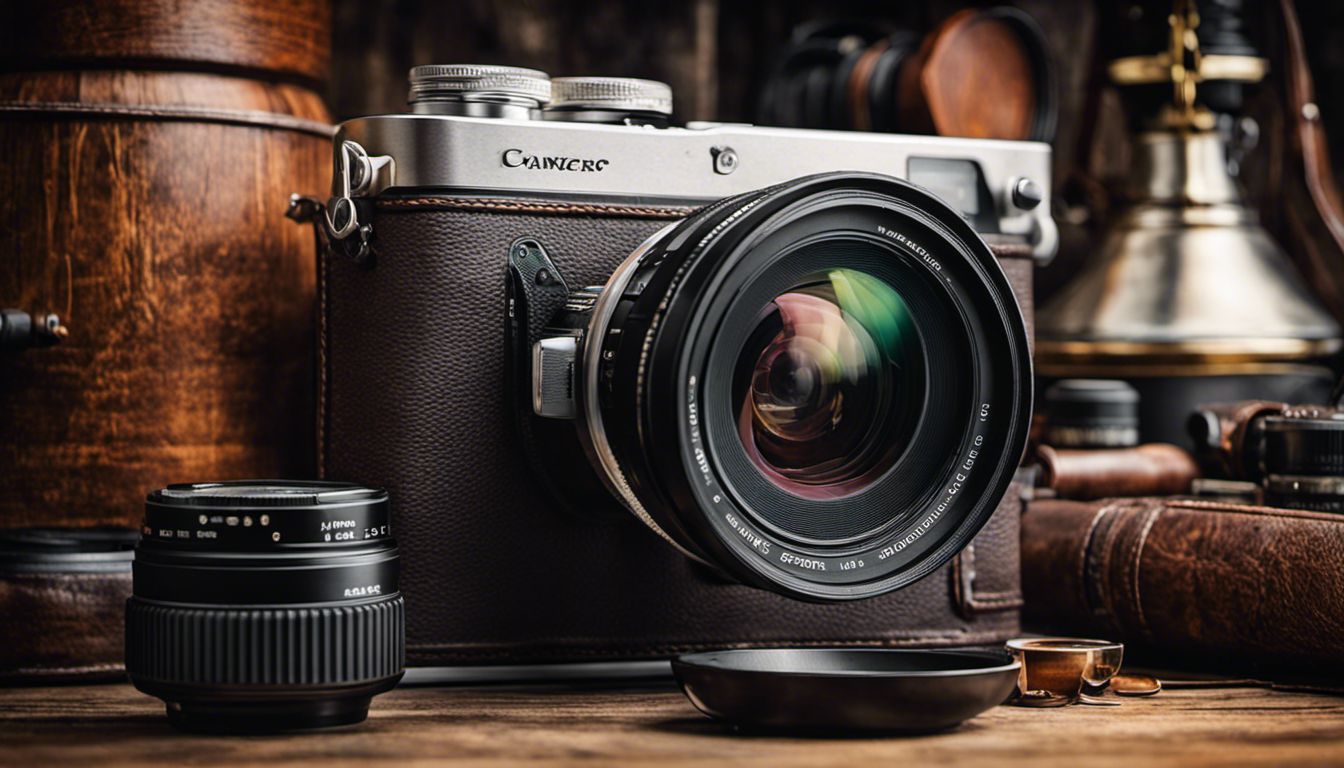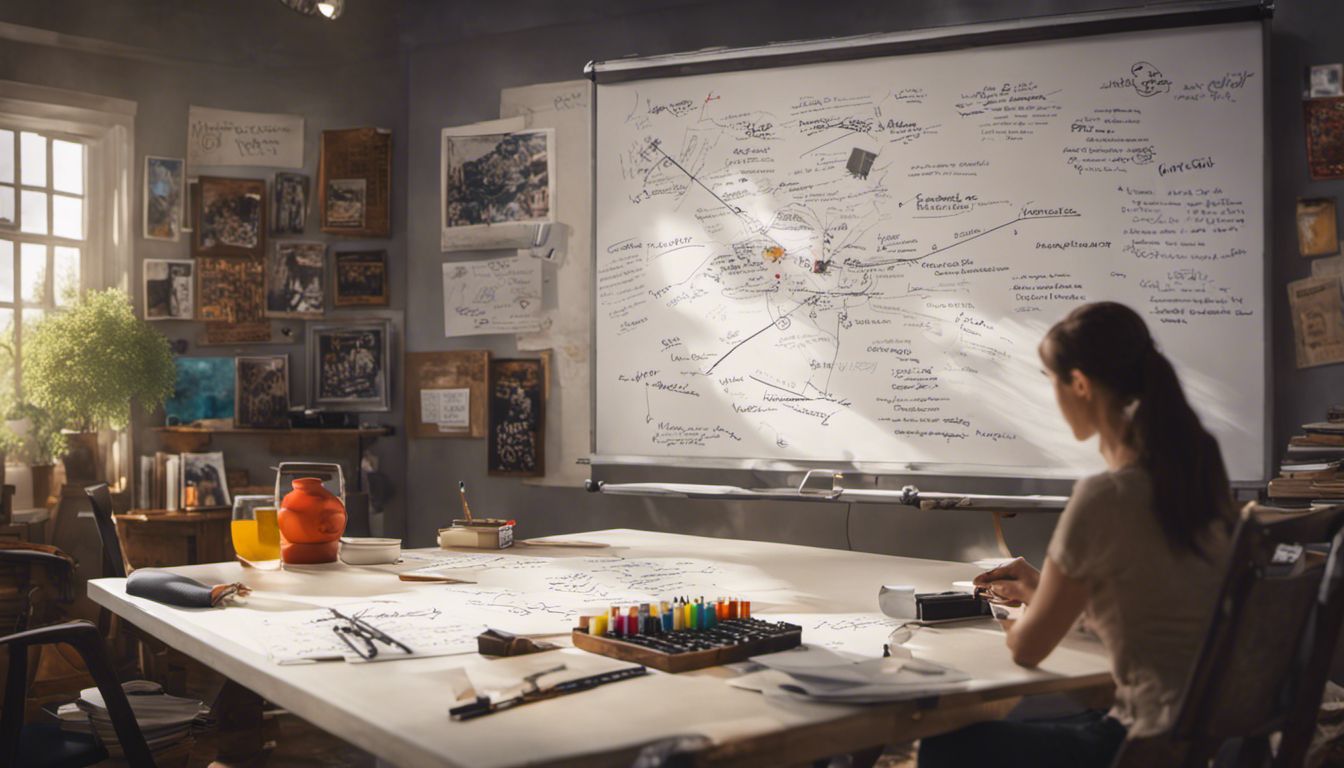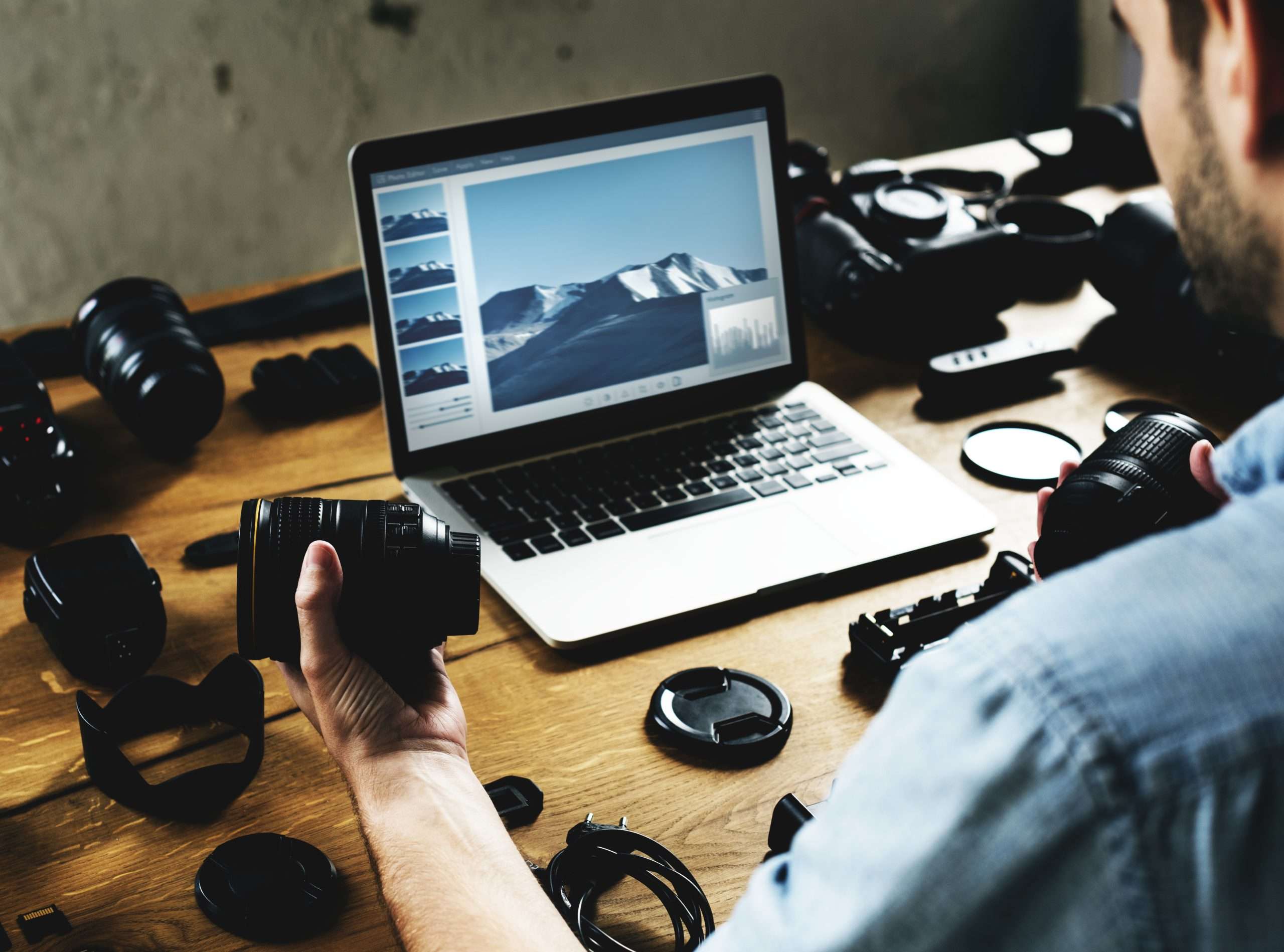Key Takeaways
- Videography involves capturing moving images on electronic media using digital technology, and it can be used to create a wide range of video content such as short films, documentaries, corporate videos, and event coverage.
- SilverWater Productions is a unique video production company that takes a creative and personalized approach to each project. They use high-grade camera equipment and specialized settings to produce visually stunning videos.
- When planning a video shoot, it’s important to consider who needs to be mic’d up for optimal audio quality. Main subjects, performers, and participants in interviews or dialogues should be mic’d to ensure clear and crisp sound throughout the video.
- Before creating a video, essential questions should be asked about the purpose of the video, target audience, key messages to convey, timeline for completion, budget considerations, and how results will be measured.
Common Questions About Videography
 What is videography?
What is videography?
What is videography?
Videography is the art and process of capturing moving images on electronic media. It often involves producing video content with a creative approach, similar to how cinematography works in film making. At its core, videography refers to creating compelling visual narratives using digital technology – this can include anything from short films and documentaries to corporate videos and event coverage. Modern videographers use various equipment like drones or handheld cameras, and software for editing to create dynamic visuals that tell a story or convey a message effectively. They blend creativity with technical skills to produce high quality video content that captivates audiences.What types of videos can you create?
The creative world of videography presents endless opportunities for video creation. You can create a stunning short film, capturing compelling narratives and unique perspectives. These videos engage viewers with their cinematic storytelling, gripping characters, and vivid imagery. More practical types include event coverage such as weddings, corporate meetings or concerts where you document the happenings in an aesthetically pleasing manner. Diving into specialized video settings, you have options like documentary-style videos offering insightful glimpses into real-life situations or educational videos designed to teach specific skills or knowledge. For businesses reaching out to potential customers; promotional videos showcasing products or services are key assets in marketing strategies. Even more specific are testimonial videos giving voice to satisfied customers who share their positive experiences about a product or service. The scope is broad in the realm of videography allowing creators to experiment with diverse styles and formats tailored to achieve various objectives.What makes SilverWater Productions unique?
SilverWater Productions stands apart in the Video Production industry with its innovative approach. They blend creativity and technical expertise to craft captivating videos that speak volumes. Unlike many other production companies, SilverWater does not use cookie-cutter methodologies; instead, they tailor each project to reflect the unique vision of the client. Their diverse portfolio boasts a range of projects from short films to event coverage, all showcasing their meticulous attention to detail. Another standout feature is their commitment to using high-grade camera equipment for superior video quality and specialized video settings that suit different project requirements perfectly. They bring their own unique flair into every story they narrate through videography, securing them an esteemed position in the industry.How do you handle payment for your services?
We offer flexible payment options for our videography services. Once we have discussed your project and determined the scope of work, we will provide you with a detailed quote outlining the cost. We accept various forms of payment, including credit cards and bank transfers. A deposit is typically required to secure your booking, with the balance due upon project completion. Our transparent pricing ensures that you know exactly what to expect and allows for easy budgeting throughout the process. Rest assured that we value our clients and aim to make the payment process as convenient as possible.What is your approach to filming?
Our approach to filming at SilverWater Productions is centered around capturing the essence and emotion of the subject matter. We believe in telling compelling stories through our videos, whether it’s a short film or event coverage. Our team of skilled videographers utilizes professional camera equipment and specialized video settings to ensure we capture high-quality footage that engages and resonates with our target audience. By paying attention to lighting, composition techniques, and audio quality, we create visually stunning videos that leave a lasting impression.Who will be mic’d during the video shoot?
During a video shoot, it is important to ensure that the right people are mic’d up for optimal audio quality. Typically, the individuals who will be mic’d include the main subjects or performers in the video, such as actors or speakers. This ensures that their voices are clear and easily heard during playback. Additionally, if there will be any interviews or dialogues taking place, those participants should also be mic’d to capture their conversations effectively. By strategically placing microphones on these key individuals, videographers can create professional-quality videos with clear and crisp sound throughout. So when planning your video shoot, make sure to consider who needs to be mic’d based on their roles and involvement in the production process.Essential Questions to Ask Before Creating a Video
 Before diving into the creation of a video, it’s important to ask yourself some essential questions. These include understanding the purpose of the video, identifying your target audience, determining key messages you want to convey, setting a timeline for completion, establishing a budget, and considering how you will measure results and return on investment.
Before diving into the creation of a video, it’s important to ask yourself some essential questions. These include understanding the purpose of the video, identifying your target audience, determining key messages you want to convey, setting a timeline for completion, establishing a budget, and considering how you will measure results and return on investment.
Purpose of the video
The purpose of the video is one of the essential questions you need to ask before creating a video. Knowing the purpose will help guide your decisions on content, style, and approach. Whether it’s to promote a product, educate viewers, document an event, or tell a compelling story, having a clear understanding of the purpose will ensure that your video effectively communicates your message to the target audience. By identifying and defining your purpose upfront, you can create a focused and impactful video that achieves your desired goals.Target audience
To create an effective video, it’s important to identify your target audience. Knowing who you are trying to reach will help you tailor your message and style accordingly. Whether it’s a short film or event coverage, understanding the demographics, interests, and preferences of your intended viewers is crucial in order to engage them and achieve the desired impact. By considering your target audience throughout the entire videography process – from planning to editing – you can ensure that your video resonates with the right people and achieves its purpose effectively.Key messages
Key messages are the central ideas or concepts that you want to convey through your video. They serve as the main takeaways for your audience and help guide the direction of your video production. When creating a video, it’s important to clearly identify and articulate your key messages early on in the planning phase. By doing so, you can ensure that your video effectively communicates its intended purpose and resonates with your target audience. Whether you’re promoting a product, sharing information, or telling a story, having clear key messages will help keep your video focused and impactful. So take some time to think about what you want to say and how you want to say it in order to create a compelling and engaging video that delivers its key messages effectively.Timeline
When planning a video production project, having a timeline is crucial. It helps you stay organized and ensures that everything runs smoothly from start to finish. Whether you’re creating a short film or covering an event, establishing an ideal timeline allows you to allocate sufficient time for pre-production tasks like scriptwriting, location scouting, and casting. It also helps you plan out the shooting schedule and post-production activities such as editing and finalizing the video. By setting clear deadlines for each phase of your project, you’ll be able to deliver high-quality videos on time to your clients or audience.Budget
Determining your budget is a crucial step when planning any video project. It sets the foundation for what you can achieve and helps you make informed decisions about equipment, crew, and other resources. Consider factors such as the complexity of the video, required locations, talent fees, post-production costs, and any additional expenses that may arise during filming. By having a clear understanding of your budget from the start, you can ensure that your project stays on track financially while still delivering high-quality results.Measuring results and ROI
Measuring the results and ROI of your video is crucial to determine its success. By analyzing metrics such as views, likes, shares, and comments, you can gauge engagement levels and identify areas for improvement. Additionally, tracking conversions or sales generated from your video will provide valuable insights into its effectiveness as a marketing tool. Remember to set clear goals before measuring results and ROI to ensure that your analysis is focused and meaningful.Tips for Professional-Looking Videos
Research, gather equipment, plan your shoot, tell a compelling story, and consider lighting, composition techniques, and audio for high-quality results. Ready to take your videography skills to the next level? Read on!Research
To create professional-looking videos, it’s important to conduct thorough research. Here are some tips to guide your research process:- Identify your target audience and their preferences.
- Explore current trends and popular video styles.
- Study successful videographers and learn from their techniques.
- Research different camera equipment and determine what suits your needs.
- Familiarize yourself with specialized video settings and how they can enhance your footage.
- Look into various editing software options to find the best fit for your project.
Gather equipment
To create professional-looking videos, it’s important to gather the right equipment. Here are some essential items you’ll need:- Camera: Choose a high-quality camera that suits your videography needs. Consider factors such as resolution, frame rate, and lens compatibility.
- Tripod or stabilizer: Keep your shots steady with a tripod or stabilizer. This will help eliminate shaky footage and ensure a polished look.
- Lighting equipment: Good lighting can make a huge difference in the quality of your videos. Invest in lights that provide sufficient illumination and allow for adjustments based on the shooting environment.
- Microphone: Clear audio is just as important as clear visuals. Use an external microphone to capture high-quality sound and eliminate background noise.
- Memory cards and batteries: Ensure you have enough memory cards with sufficient storage capacity to capture all your footage. Don’t forget to bring extra batteries to keep your equipment powered throughout the shoot.
- Lenses and filters: Experiment with different lenses and filters to achieve various effects and enhance your creativity during filming.
- Cables and accessories: Don’t overlook the importance of cables, adapters, and other accessories that may be needed for connectivity or additional functionalities.
Plan shoot
To ensure a successful video shoot, it is important to plan ahead and consider the following:- Determine the purpose of your video: Clearly define what you want to achieve with your video, whether it’s promoting a product, sharing information, or capturing an event.
- Outline your target audience: Identify who you want to reach with your video and tailor your content accordingly. Understanding their preferences and interests will help you create more engaging content.
- Craft key messages: Decide on the main points you want to convey in your video. Keep them concise and easy to understand to effectively communicate your message.
- Set a realistic timeline: Plan out the necessary steps for pre-production, filming, and post-production. Allow enough time for each phase to ensure a smooth workflow.
- Establish a budget: Determine how much you are willing to spend on equipment, location rentals, props, and any other resources needed for your shoot.
- Consider measuring results and ROI: Think about how you will track the success of your video once it’s published. Set specific goals and decide on metrics that will help evaluate its impact.
Tell a story
Capture the attention of your audience by telling a compelling story through your videos. Whether you’re creating a short film, event coverage, or a promotional video, storytelling is key to engaging viewers and leaving a lasting impact. Use narrative elements such as character development, conflict, and resolution to create an emotional connection with your audience. Consider the power of visuals, music, and editing techniques that enhance your story’s message. By crafting a captivating narrative thread throughout your videos, you’ll not only entertain but also inspire and connect with your viewers on a deeper level.Use lighting and composition techniques
To create professional-looking videos, it is important to use lighting and composition techniques. Here are some tips to help you achieve the desired effect:- Find the right lighting: Consider the natural lighting available at your shooting location. If necessary, use additional lights or reflectors to enhance the visibility and aesthetics of your video.
- Use the rule of thirds: Divide your camera frame into a 3×3 grid and position your subject at one of the intersecting points. This helps create a visually pleasing composition.
- Frame your shots carefully: Pay attention to what is included in the frame and what is left out. Avoid unnecessary distractions and focus on capturing the most relevant elements.
- Experiment with angles: Try shooting from different angles to add depth and visual interest to your videos. Experiment with low-angle shots, high-angle shots, or even unconventional perspectives.
- Create depth with foreground and background elements: Include objects or people in the foreground to add depth to your shots. This can create a more immersive viewing experience for your audience.
- Understand color temperature: Different light sources have different color temperatures (warm or cool). Be aware of how these temperatures affect the overall mood of your video and use them deliberately to convey specific emotions.
- Control shadows: Shadows can add drama and dimension to your videos, but be mindful of their placement and intensity. Use fill lights or diffusers to soften harsh shadows if needed.
Consider audio
To create professional-looking videos, it’s important to consider audio. Good sound quality can make or break a video, so make sure you have the right equipment for capturing clear and crisp audio. Use a high-quality microphone that is suited for your specific needs, whether it’s recording interviews, voiceovers, or ambient sounds. Pay attention to background noise and minimize any distractions that could affect the overall audio quality. Don’t forget to test your audio setup before every shoot to ensure everything is working properly. By considering audio as an essential component of your video production process, you can enhance the viewer’s experience and deliver a more polished final product.On-Set Safety Tips for Filmmakers
Filmmakers should ensure proper camera placement, adjust white balance for optimal lighting, time shots accurately, and prioritize rigging and drone safety.Proper camera placement
Proper camera placement is crucial for capturing high-quality footage in videography. Placing the camera at the right angle and height can greatly enhance the visual appeal of your videos. When positioning the camera, consider factors such as framing, perspective, and composition. Ensure that your subject is in focus and properly centered within the frame. By paying attention to camera placement, you can create visually stunning videos that engage your audience and leave a lasting impression.White balance
White balance is a crucial aspect of videography that can greatly affect the overall look and feel of your videos. It refers to the adjustment of colors in your footage to accurately represent true colors under different lighting conditions. When white balance is not properly set, your videos may appear too warm or cool, resulting in unnatural-looking colors. By adjusting the white balance settings on your camera, you can ensure that whites appear white and all other colors are accurate and balanced. This small but important step can make a big difference in producing professional-looking videos with vibrant and realistic colors.Time shots
Capturing time shots is an essential skill for videographers. By adjusting the camera’s settings, such as shutter speed and frame rate, you can create stunning effects like slow-motion or time-lapse footage. Slow-motion shots are perfect for emphasizing details or adding a dramatic touch to your videos. On the other hand, time-lapse shots condense long periods into just a few seconds, allowing you to showcase changes over time. Mastering these techniques will enhance the visual appeal of your videos and make them stand out from the crowd. So don’t be afraid to experiment with different settings and get creative with your time shots!Rigging and drone safety
Rigging and drone safety are crucial aspects of videography that should not be overlooked. To ensure a safe and successful shoot, here are some important tips to follow:- Inspect equipment thoroughly before use.
- Use proper rigging techniques to secure cameras and other equipment.
- Follow all local laws and regulations regarding drones.
- Conduct a pre – flight check of the drone, including checking battery life and GPS signal.
- Avoid flying drones near people or buildings without permission.
- Always maintain visual contact with the drone during flight.
- Be aware of weather conditions that can impact drone operation, such as strong winds or rain.
- Have a spotter assist you when operating a drone to help avoid potential hazards or obstacles.
Conclusion
In conclusion, by understanding the basics of videography and asking essential questions before starting a project, you can create professional-looking videos that effectively communicate your desired messages to your target audience. By following tips for planning and executing video shoots, as well as prioritizing safety on set, you can ensure a smooth production process. With this ultimate guide in hand, you now have the knowledge to excel in general videography. Get out there and start creating amazing videos!What Equipment Do I Need as a Beginner Videographer?
As a beginner videographer, it’s crucial to have the right beginners’ videography equipment essentials. Start with a reliable camera that offers manual controls for exposure and focus. A sturdy tripod ensures stable shots, while extra batteries and memory cards keep you going. Don’t forget a versatile lens, microphone for good audio, and a portable storage solution like a hard drive.
What Are Some General Videography FAQs That Also Apply to Wedding Videography?
Planning a wedding can be overwhelming, but wedding videography frequently asked questions can help ease the stress. Couples often wonder about the best cameras, how to find a reliable videographer, and what kind of shots are essential. They also ask about budgeting, editing options, and how to choose the perfect music. Understanding these general videography FAQs can prove invaluable for couples seeking to document their special day.






